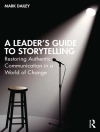Imagining Outer Space makes a captivating advance into the cultural history of outer space and extraterrestrial life in the European imagination. How was outer space conceived and communicated? What promises of interplanetary expansion and cosmic colonization propelled the project of human spaceflight to the forefront of twentieth-century modernity? In what way has West-European astroculture been affected by the continuous exploration of outer space? Tracing the thriving interest in spatiality to early attempts at exploring imaginary worlds beyond our own, the book analyzes contact points between science and fiction from a transdisciplinary perspective and examines sites and situations where utopian images and futuristic technologies contributed to the omnipresence of fantasmatic thought. Bringing together state-of-the-art work in this emerging field of historical research, the volume breaks new ground in the historicization of the Space Age.
Inhoudsopgave
Figures.- Abbreviations.- Acknowledgments.- Contributors.- Introduction.- 1. European Astrofuturism, Cosmic Provincialism Historicizing the Space Age; A.C.T.Geppert.- PART I: NARRATING OUTER SPACE.- 2. Space, Time and Aliens:The Role of Imagination in Outer Space; S.J.Dick.- 3. Heaven on Earth: Tunguska, 30 June 1908; C.Schmölders.- 4. Imagining Inorganic Life: Crystalline Aliens in Science and Fiction; T.Brandstetter.- PART II: PROJECTING OUTER SPACE.- 5. Projecting Landscapes of the Human Mind onto Another World: Changing Faces of an Imaginary Mars; R.Eisfeld.- 6. ‘Smash the Myth of the Fascist Rocket Baron’: East German Attacks on Wernher von Braun in the 1960s; M.J.Neufeld.- 7. Transcendence of Gravity: Arthur C. Clarke and the Apocalypse of Weightlessness: T.Bjørnvig.- PART III: VISUALIZING OUTER SPACE.- 8. Per Media Ad Astra?: Outer Space in West Germany’s Media, 1957-87; B.Mütter.- 9. Balloons on the Moon: Visions of Space Travel in Francophone Comic Strips; G.de Syon.- 10. ‘A Stumble in the Dark’: Contextualizing Gerry and Sylvia Anderson’s Space: 1999; H.Keazor.- PART IV: ENCOUNTERING OUTER SPACE.- 11. Life as We Don’t Yet Know It: An Anthropologist’s First Contact with the Science of ‘Weird Life’; D.Battaglia.- 12. A Ghost in the Machine: How Sociology Tried to Explain (Away) American Flying Saucers and European Ghost Rockets, 1946-47; P.Lagrange.- 13. Seeing the Future of Civilization in the Skies of Quarouble: UFO Encounters and the Problem of Empire in Postwar France; J.Miller.- PART V: INSCRIBING OUTER SPACE.- 14. Self-Reproducing Automata and the Impossibility of SETI; G.Munévar.- 15. Inscribing Scientific Knowledge: Interstellar Communication, NASA’s Pioneer Plaque, and Contact with Cultures of the Imagination, 1971-72; W.R.Macauley.- 16. Alien Spotting: Damien Hirst’s Beagle 2 , Mars Lander Calibration Target and the Exploitation of Outer Space; T.Weddigen.- Epilogue.- 17. Look Up: Art in the Age of Orbitization; P.Pocock.- Bibliography.- Index.
Over de auteur
Alexander C.T. Geppert is Associate Professor of History and European Studies and Global Network Associate Professor at New York University Shanghai as well as NYU’s Center for European and Mediterranean Studies in New York City. From 2010 to 2016 he directed the Emmy Noether research group ‘The Future in the Stars: European Astroculture and Extraterrestrial Life in the Twentieth Century’ at Freie Universität Berlin.












